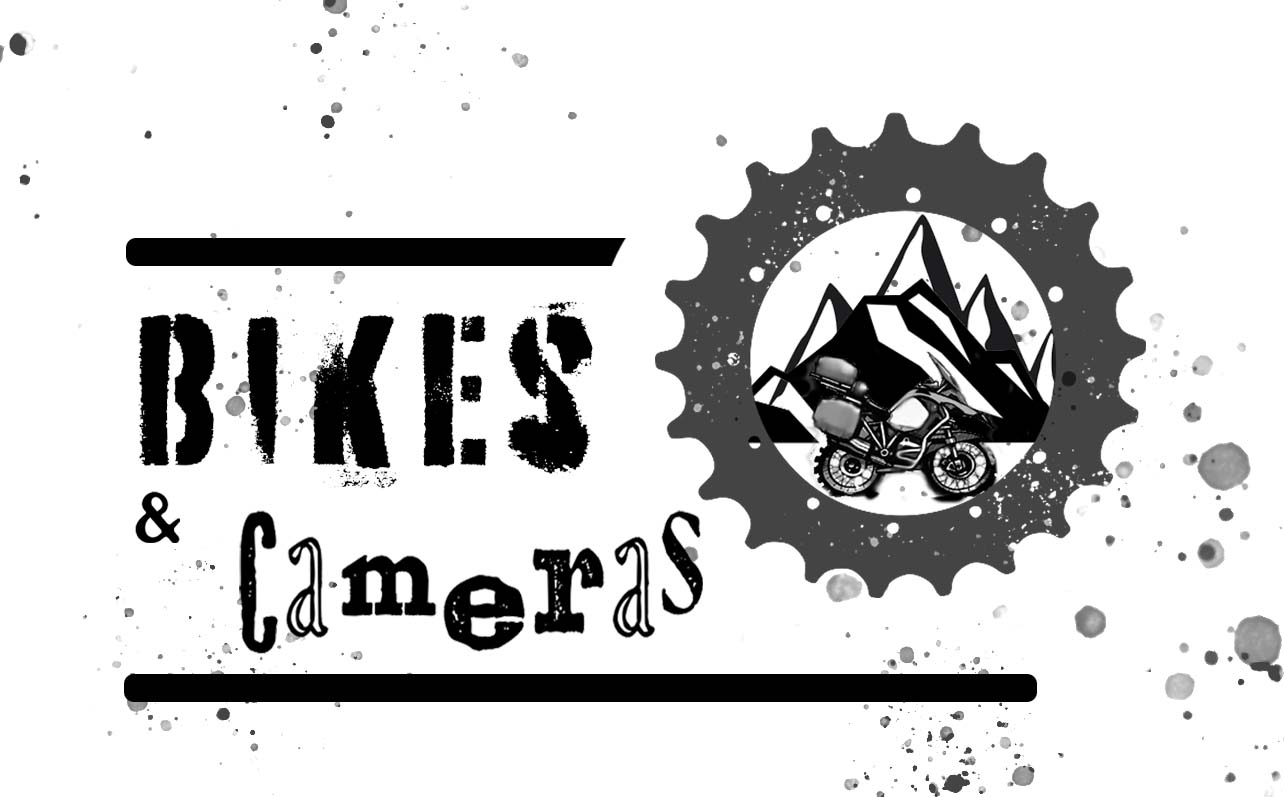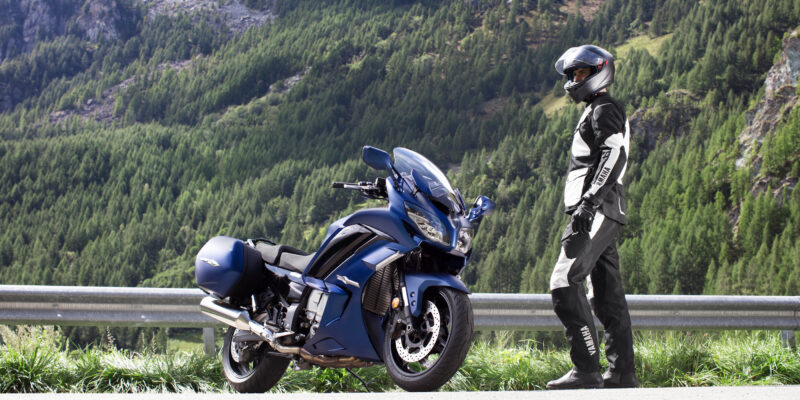The road ahead, the wind in your hair (or if you’re follicly challenged like me, the wind in your beard!) the freedom of the open road, and escaping from the nagging wife stress of work. There’s a lot to like about touring on a motorcycle. But how do you choose that perfect bike? What is the best motorcycle for touring? Well, strap yourself in because I’m going to tell you exactly that!
We all love a browse through Autotrader (or your local equivalent) looking for that dream machine. But you can only tell so much about a bike by looking at the photos and the typical touring machines
- Traditional touring motorcycles
- Adventure motorcycles for touring
- Touring on a cruiser-style motorcycle
- Sport touring motorcycles – an exercise in choosing your compromise.
- Touring on a sportbike
- Touring on small-capacity motorcycles
- Touring on the bike you have
Traditional touring motorcycles
This seems like the obvious place to start. We’re talking pure, purpose-built touring machines here. In this category comes bikes like the BMW RT series, or K1600, in a more Japanese flavour, you’ve got bikes like the Yamaha FJR1300 Honda Goldwing, or the pan European and if you’re into British heritage, the Triumph trophy fits the same bill.

Typically, these machines will be supremely comfortable for long distances, with a pure road focus aimed at consuming large mileage over multiple days. They’re going to be your strongest options for weather protection, typically with high windscreens putting you in a complete bubble of calm as you cruise to your destination. Combined with a long-range petrol tank, and typically built-in luggage – these bikes come equipped off the shelf to take you far, far away.
On the flip side, optimal weather protection has its downsides. It can take away some of that enjoyment biking brings of being in your surroundings rather than a casual observer of them. From the factory, these are also going to be top-tier, premium machines and very expensive to purchase – though second-hand machines will be available, with Japanese machines being your best bet for a bargain in this category. And if it matters to you, these are going to be the lowest scoring in terms of generally looking cool.
If long miles, on the road in the most comfort, is your primary riding aspiration, and money isn’t too much of a limiting factor for you these types of touring motorcycles may be the choice for you.
If you’re on a tighter budget and maybe you want your bike to be a bit more versatile than just a mile-munching land barge one of the other categories on this list may be better for you.
Adventure motorcycles for touring
If you liked some of what you heard in the category above, but maybe you’re after a more adventurous image, or even just a bit more legroom while riding – The Adventure category might be for you.
I’m going to include everything from the Off-road ready Yamaha T700, through the best-selling BMW r1200/1250gs all the way through to the more road-focused adventure styles bikes such as the Kawasaki Versys 1000, Honda NT1000 and Yamaha Tracer 9. You could put these road-biased machines in the strict touring category – but I’m not going to. For me, when it comes to road touring these upright machines, with adventure seating positing can be bunched together when it comes to their shared pro’s and cons.
The big advantages of this style of bike are rooted mainly in versatility and comfort. Comfort can vary on these machines but for the most part, you’ll find an upright position (sometimes referred to as ‘sit-up-and-beg’) which takes the weight off your wrists and arms and reduces strain in your neck over long distances. As well as being comfortable for the long haul, these bikes also tend to make great weekend toys making them, in both my view and the view of the many millions of riders opting for this style of bike, a much more well-rounded machine to have in your garage – a true ‘one bike garage’ option.
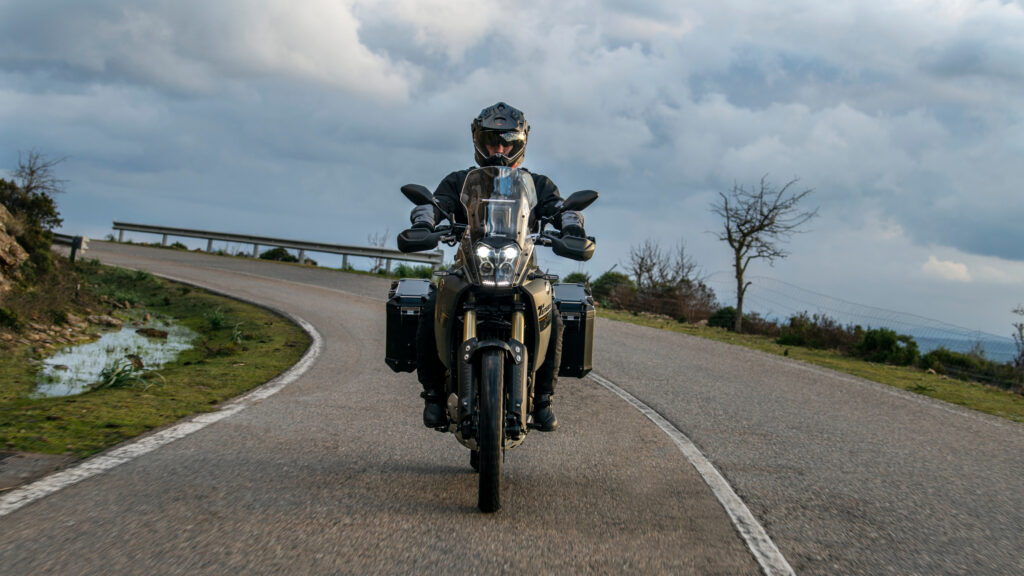
Other pros for these bikes include a guide range of accessories, as well as a massive and ever-growing range of bike options to choose from with this being the biggest growth category for motorcycles over the last few years. These bikes also tend to be better two-up than a lot of less distance-focused machines, while perhaps not as ready to take a passenger as a touring-specific bike like a Goldwing, they tend to keep your passenger fairly happy (and the marginally higher cool factor might make you more likely to find that special pillion). These bikes are also perfect for the taller rider looking for leg room and to ease the neck pain they get from leaning down to reach the bars on more standard position motorcycles.
Some things to watch out for in this category include some prices on par with some touring machines, particularly if you’re going down the BMW route, however, the greater range of options means you are likely to find a bike that fits both your wants and budget.
Another point to consider is your sensitivity to vibrations. Most will tell you I’m talking rubbish and this isn’t something to worry about. However, a small percentage (let’s say 5% for argument’s sake) will agree with me that these bikes, particularly the larger flagship adventure bikes, like the BMW, the Africa Twin and Suzuki Vstrom can be uncomfortably vibey in the bars due to their large bore twin engines. This is definitely a matter of taste. It’s something most of us can get used to but for some, it really is something they can’t live with and it leaves them with numbness and, in extreme cases, even pain in their hands as a result.
You can also expect to get some jip about how much time you spend in Starbucks vs actual ‘adventuring’ on your adventure bike. But that’s ok – these people will generally be hunched-over creatures, re-formed from years of trying to look cool on their gsxr 1000.
Touring on a cruiser-style motorcycle
So I think you’re either going to be a cruiser rider or you’re not. I’m going to argue that bikes like the Harley Road Glide and the Indian Road Master actually fit more in the dedicated touring category – so I’m talking more about your Harley Dyna or your Indian Scout. If you want to go metric there are some Japanese options in each flavour to choose from as well.
What is there to say here? These bikes can give you a comfortable upright position, or some weird seating position that makes you look and feel like you’re Donkey Kong and someone has chosen you as their mario kart character for this particular run around the track.
I think if you’re going down this route – you’re doing it because you like cruisers, and that’s totally fine. Just be sure you find one that’s comfortable for the long ride. Sitting on your tailbone for long hours isn’t for everyone but it will suit some. The variation of mid and forward controls also makes a big difference when it comes to long-distance comfort.
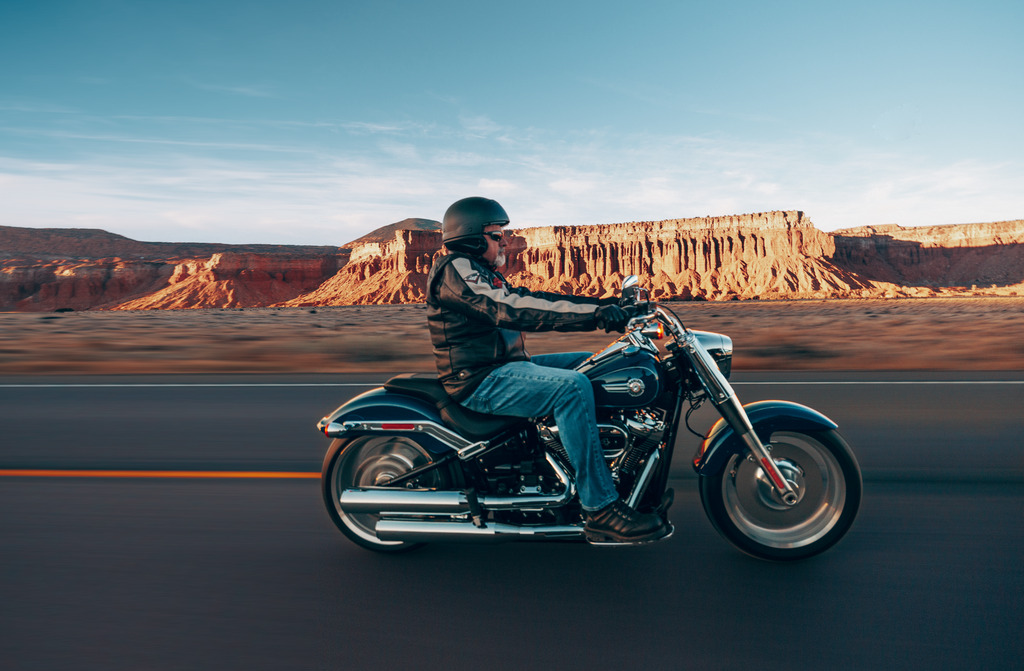
These bikes are designed in America, where the roads are long and straight. They don’t tend to have the cornering clearance of really any other category on this list, so if you like some speed through tight twisties it may be worth considering a different option.
Personally, cruisers aren’t for me for this kind of riding, or to be honest for any kind of riding where how you feel is more important to you than how you look. Cornering is weird, the balance on the bike feels top heavy, and don’t get me started on the batshit way Harley set up their controls. But I won’t knock anyone for wanting to look cool on a bike. It is, after all, the main reason we all got into this in the first place.
Sport touring motorcycles – an exercise in choosing your compromise.
Like with the adventure bikes, we need to set some ground rules here. When it comes to sport touring, the industry has been trying to find a way to categorise road-biased adventure-style bikes, and they often fall into the sport touring bracket. We’re not doing that here and we’re going to go for a more traditional definition. The likes of the Kawasaki Ninja 1000 sx, the Honda VFR (old style not cross tourer) and in a British flavour, the Triumph Sprint.
It’s fair to say this is a dying category. More and more we’re seeing adventure format bikes, with road-going wheel sizes, tech and suspension replacing the slightly more sportier riding position of the traditional sports tourer.
This bike is an exercise in admitting that sports bikes are uncomfortable for longer rides, but we still want to feel a bit sporty while we’re doing it. And maybe we want to throw our pillions a hint of comfort as well if they must insist on coming with us on holiday.

The reality is these bikes still aren’t as comfortable as other options for long-range adventures, and the standard of adventure-style touring machines these days means that actually, the practically non-existent difference in smiles-per-gallon vs the significant difference in comfort makes that option a no-brainer.
You’ll also find it harder and harder to find this kind of bike with very few manufacturers still creating new models in this category. We’re now either heading in the direction of taking a hyper bike such as the MT 10, Superduke, or H2 and giving it a (slightly more) comfortable seat and some panniers, or jumping on the adventure train like the rest of us.
Touring on a sportbike
The upside to this is that you will go fast and look cool. The downside is you’ll be less comfortable than everyone else, and will have to come up with some janky way of strapping a back to your pillion seat.
You’re also going to spend more on fuel, more on tyres, more on speeding tickets and worry more about your bike getting knicked when you stay overnight at a hotel.
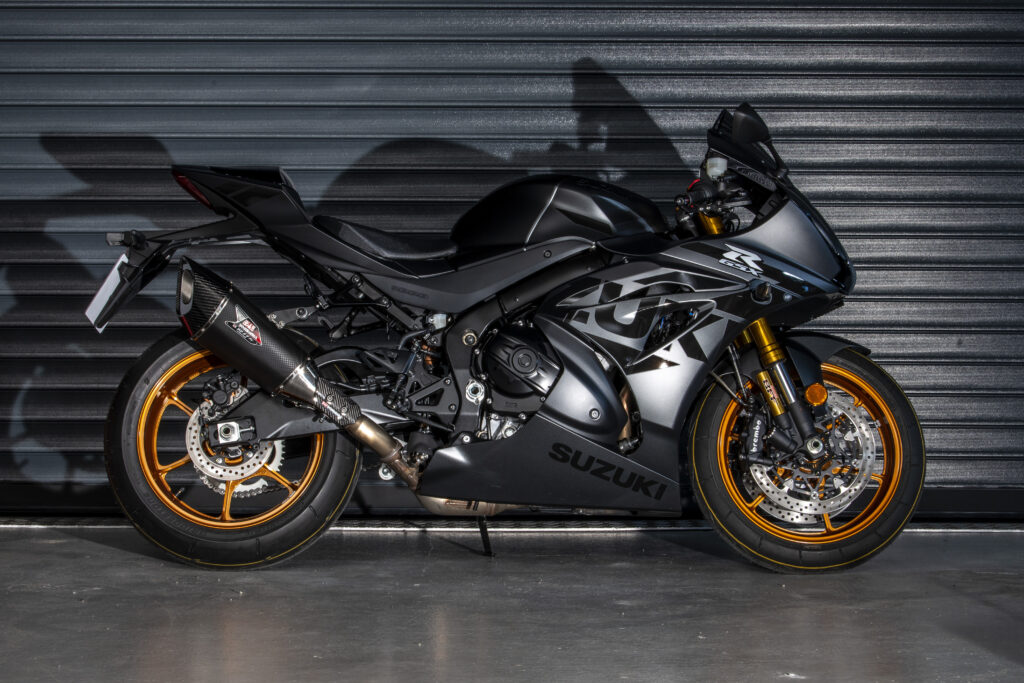
That all being said, people do it. Successfully and enjoyably and won’t have anyone else tell them there is a better way.
Whether you see it as being a purist or a mentalist, it’s horses for courses in this category.
Make your choice, and pack ibuprofen.
Touring on small-capacity motorcycles
I’m going to put small-capacity motorcycles at 300cc and under. In a lot of countries 300cc is actually quite a big bike, but for riders from the Western world – this is the categorisation I’m going for.
This can range from anyone riding on a CBT (if you’re in the UK) who wants to follow that need for adventure on their 125cc bike to people riding lightweight adventure bikes for the other benefits that come with it.
Big heavy machines may be the staple of the touring scene, but there is a lot to be said for choosing a smaller-capacity bike.

As a starting point, the cost to buy is going to be a lot lower. For the price of a 5-year-old, high-mileage adventure bike with no warranty and questionable maintenance history, you could pick up a brand-new Royal Enfield Himalayan, or Honda CRF 300L/Rally.
When it comes to other costs, like fuel and insurance – you’re also going to find there are great savings to have on these kinds of bikes making them a great option if going as far as you can on as little money as possible is your main goal.
It also opens up more options to those in the community with limited licenses. Just because you’re on an A2 license, that doesn’t mean the world is closed to you. These smaller machines can do a fine job of getting you around the world.
The other key advantage is weight. If you’re going more off the beaten track, a lighter machine is going to be easier to pick up when you drop it, and easier to squeeze into a hotel lobby if you’re staying in parts of the world where this is the standard approach to keeping your bike safe on an overnight stay.
There are a few downsides to being aware of. In the first instance, you need to be prepared that it might take you a little bit longer to cover the distance. You might think that 50mph is 50 mph and 60mph is 60mph regardless of the bike you’re doing it on. Unfortunately, you’re like to find that’s not the case. The reduced comfort of a smaller machine and the lower inclination to hop on the motorway or dual carriageway to skip past the boring parts of the trip are likely to mean it will like-for-like take you longer to get from A to B vs a larger capacity, more comfortable bike when you factor in your rest stops and such like.
If you’re travelling two up, a smaller capacity machine isn’t really the way to go. On CBT it’s fundamentally against the law, but even with a full license, a bike with 300cc’s or less is going to struggle with two people on it. Like everything in life, there’s a way to make it work – I’m just saying it’s not optimal. The same goes for your luggage carrying capacity. On a 1200cc adventure bike, adding 100 litres of luggage will be barely noticeable in comparison. Add that to a bike that ways 150kg, and has 25 bhp and the impact on the bike is going to be significantly more noticeable.
If you’re going this route, you’re probably doing it for a reason, of either cost saving, simplicity necessity or, in some cases, pure comedy. For all of these motivations, a great adventure is completely achievable and equally enjoyable on a small-capacity bike.
Touring on the bike you have
Whatever bike you’re dreaming of, don’t wait to be able to afford your perfect touring motorcycle. If you have a bike, you can absolutely go road touring on it. You might need or want to make some tweaks to it, but don’t let your bike hold you back from having the adventure you want to have.
There are a few things you can do to make your bike tour ready. Adding some handlebar risers might be just what you need to take that bit of weight off your wrists. You’re also likely to find aftermarket luggage and pannier solutions for your bike, as well as a comfier alternative to the stock seat. These bits can be hard to find, and the quality can be hit-and-miss. Your best bet might be to find the Facebook group for your particular bike and ask around for the best comfort upgrades and luggage options to suit your budget.
Other great upgrades that make all the difference are a simple phone mount to give you an instant sat-nav, along with a USB socket wired to your battery to help keep your phone charged. Heated grips are also a cheap and easy winner to keep you that bit more comfortable – particularly if you are touring in the UK.
